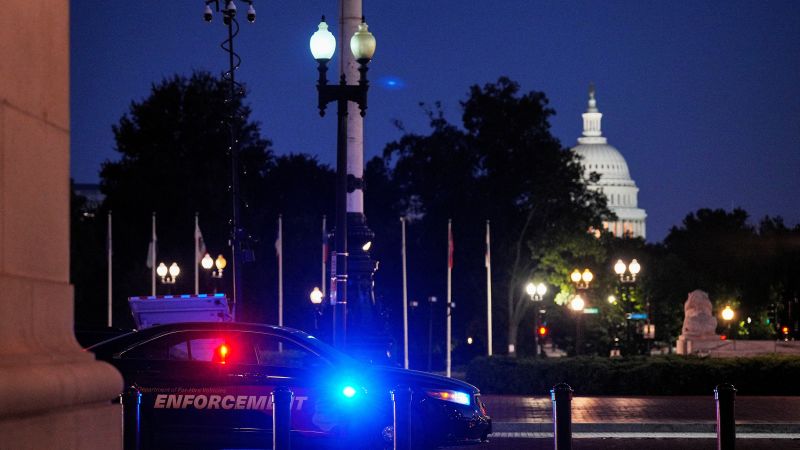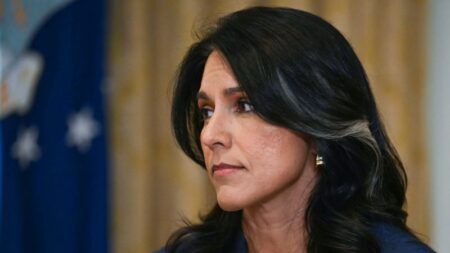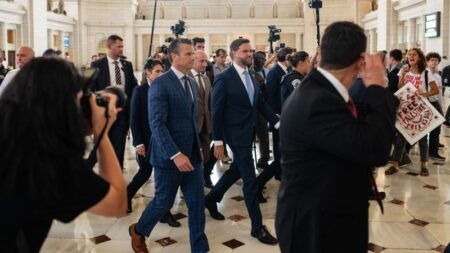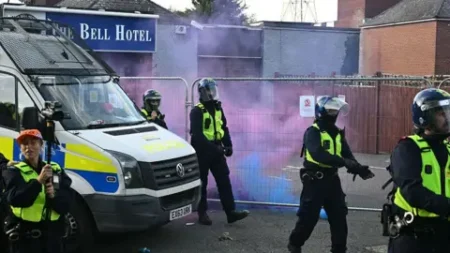In a bold move that has garnered significant attention, President Donald Trump announced plans to place the Washington, D.C. police department “under direct federal control,” alongside the deployment of National Guard troops to the nation’s capital. This decision stems from what Trump described as a public safety emergency triggered by an assault on a 19-year-old former employee of the Department of Government Efficiency during an attempted carjacking. The president’s announcement, made on Truth Social, has raised eyebrows, particularly since crime statistics for Washington, D.C. show a reduction in overall crime rates compared to the previous year.
This unprecedented step utilizes powers granted under the Home Rule Act of 1973. The act is designed to allow a balance between local self-governance and federal oversight in D.C. While the president can assume control of local police forces for a maximum of 48 hours, extending that authority beyond this period requires notifying congressional leaders. This situation creates a dynamic in which Trump can react promptly to perceived emergencies but must still operate within the confines of legislative oversight.
The timing of Trump’s announcement coincides with a legal struggle in court regarding the deployment of National Guard troops in California earlier during protests over immigration raids. As government lawyers prepared for this trial, the president articulated what he deemed the necessity of deploying federal resources to address crime and safety in the capital. This declaration feeds into Trump’s narrative, which emphasizes rising violent crime, despite statistics indicating an overall decline in D.C.’s crime rates.
As the situation unfolds, it is essential to examine the implications of Trump’s actions. The Home Rule Act permits the federal government a significant amount of power in the capital, allowing the president to dictate emergency measures in times of crisis. However, this marks a pivotal moment as it is the first time a president has assumed direct control of the police department under the act. Given such authority, extending beyond the initial two days would necessitate a formal notification to applicable congressional committees, indicating a clear requirement for transparency and accountability.
Compounding complexities arise with the fact that the Washington Mayor Muriel Bowser, along with leaders from the Washington Metropolitan Police Department, expressed surprise at Trump’s intentions. Mayor Bowser characterized the move as “unsettling and unprecedented,” attributing Trump’s perspective to his administration’s experiences during the COVID-19 pandemic when crime rates spiked. This disconnect between federal decisions and local governance can lead to friction and complicate law enforcement dynamics in the district.
Interestingly, the response from the local police union presents a different perspective. Greggory Pemberton, the chairman of the D.C. Police Union, voiced support for the president’s decision, expressing a shared belief that actions are necessary to address safety concerns. This highlights a potential rift within law enforcement perspectives about the best course of action in improving public safety in D.C.
In conjunction with the police department changes, Trump also activated 800 National Guard soldiers to assist law enforcement. The Defense Department explained that these troops would undertake administrative and logistical duties and provide a physical presence alongside local police forces. This collaboration extends beyond the National Guard, with Trump deploying FBI agents to aid local law enforcement, thus expanding federal involvement in local crime control measures.
While Trump describes the current state of crime as “out of control,” data tells a contrasting story. Washington D.C.’s violent crime rates, although occasionally troubling, have seen improvements in statistical trends. For instance, the number of reported homicides reached a concerning peak in previous years yet demonstrated a significant drop in subsequent years. Likewise, incidents of carjackings have also experienced a notable decline, countering Trump’s claims of a crime crisis. Similar reductions have been noted in cities historically plagued by high rates of violent crime.
In conclusion, Trump’s decision to exert federal control over the Washington, D.C. police department raises numerous questions about authority, local governance, and the interplay of federal and local law enforcement. The president’s actions, while rooted in legitimate concerns about public safety, must navigate existing laws and the political landscape that governs the nation’s capital. As local and federal authorities continue to assess crime and safety, this episode demonstrates the intricate balance of power and the pressing need for effective solutions to societal concerns.










